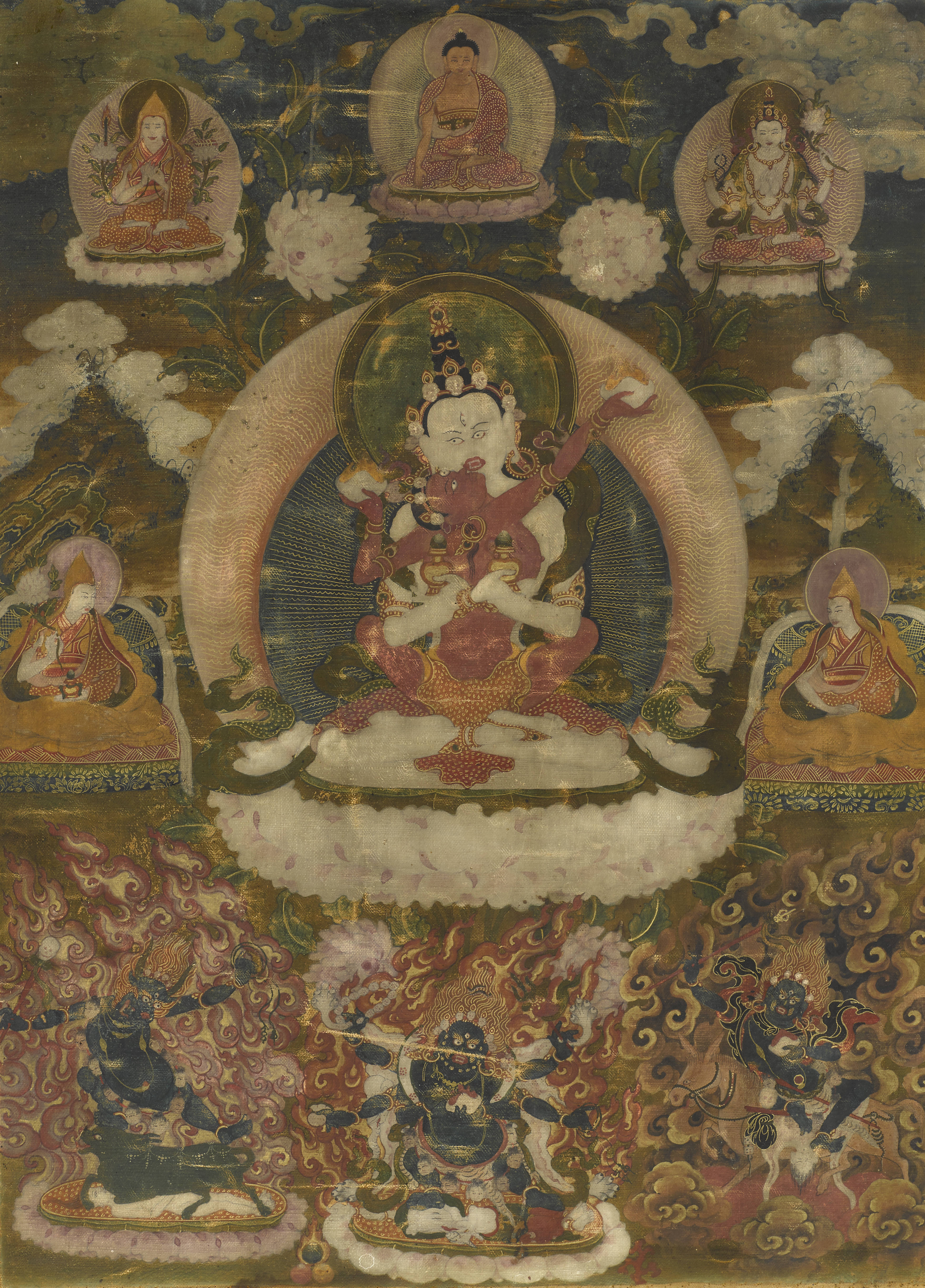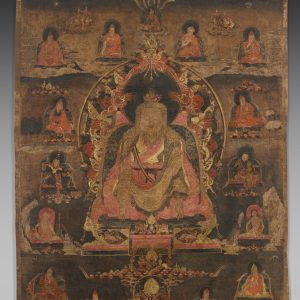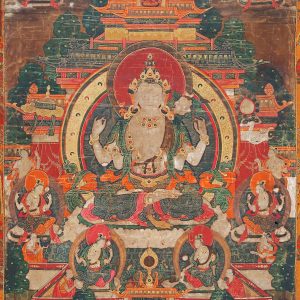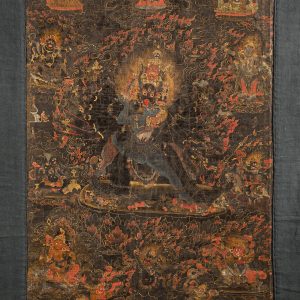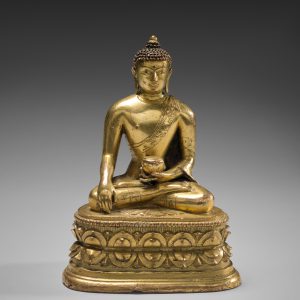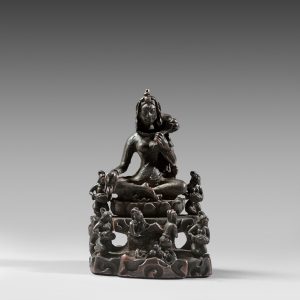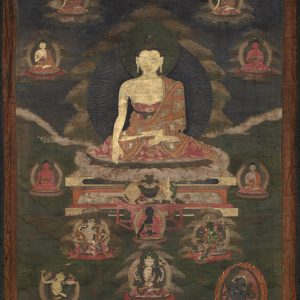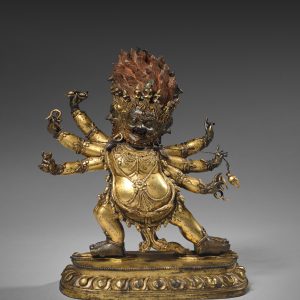White Saṁvara
22 000,00€
Tempera on canvas
Eastern Tibet
18th century
D. 48 x 35 cm or 19 x 13 ⅞ in
Description
The tutelary god Saṁvara is depicted here according to a rare iconography and identified as Sitasaṃvararāja Sitasamvararaja in the pantheon of W.E. Clark (1965, p. 81, No. 3M4-570). This aspect of the god – not found either in the Niṣpannayogāvalī, nor in the Sādhanamālā (Mallmann, 1975, p.188) – may be a Tibetan creation. Neither R. Vira nor L. Chandra cite a Sanskrit name for this hypostasis, just a Tibetan epithet: “Khor-lo sdom-pa dkar-po”. Saṁvara is represented in white (sita), sitting in the diamond pose. In either hand is a small jar filled with the liqueur of immortality. He has his arm around a prajṅā. Her red complexion identifies her as the red goddess Vajravārāhī, one of the god’s concubines, although the small sow’s head usually found on the side of her neck or the top of her head is missing. She is holding two skull cups.
At the top of the painting, Śākyamuni Buddha, in the earth-witness mudra, is surrounded by the reformer Tsong-kha-pa (1357-1419) on his right and by the bodhisattva Avalokiteśvara, in his Ṣaḍakṣarī aspect. Two priests from the dGe-lugs-pa order are turned toward the main god. Three guardian deities occupy the lower part of the picture. From left to right: the bull-headed Yama, Mahākāla in his Saḍbhuja aspect and the goddess dPan-ldan lha-mo.
The painting is a variant of the sMan-bris style. Note the fiery auras around the fierce deities, their flames strongly influenced by Chinese art, even though there is no trace Thang-ka provenance in these simple details.
Provenance: Private collection.
HAR- himayanart.org/items/61465
Ouvrages cités :
- Clark, Walter Eugène, Two Lamaistic Pantheons, Havard: Yenching Institute – Harvard University Press, 1937 (Monograph series, vol. 3-4) Réédition en un vol. New York: Paragon Book reprint, 1965
- Mallmann Marie-Thérèse, Introduction à l’ iconographie du tantrisme bouddhique. Paris: Adrien Maisonneuve, 1975 (Bibliothèque du Centre de recherché sur l’Asie centrale et la Haute-Asie, vol. 1).

